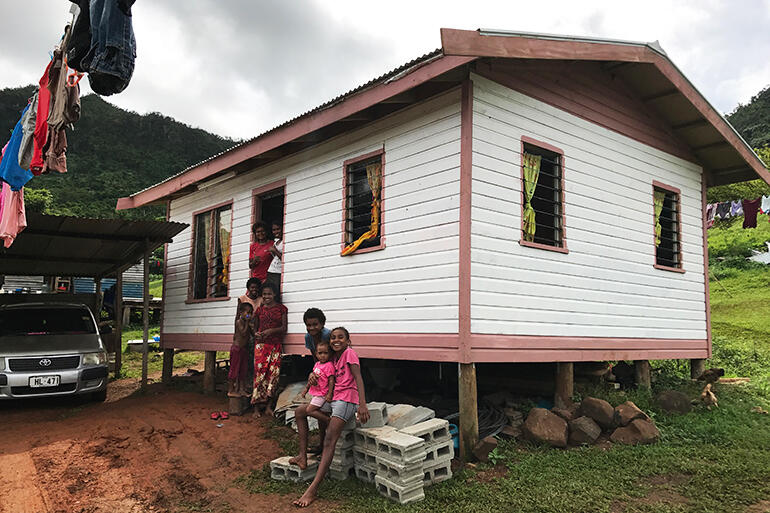
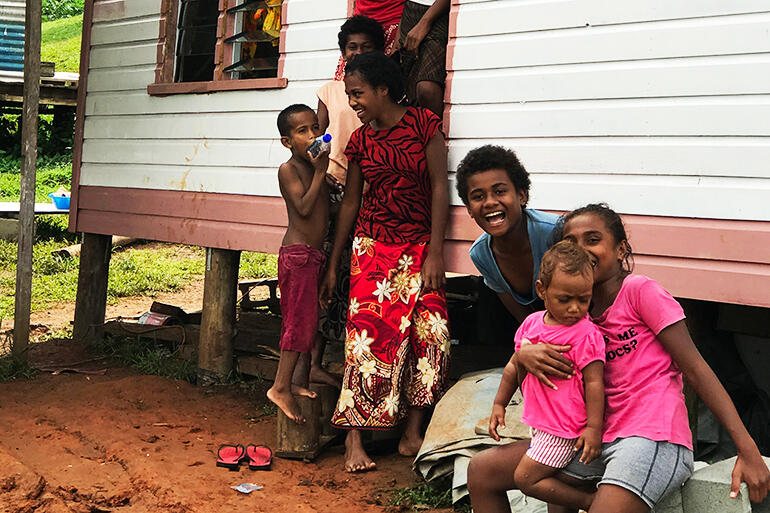
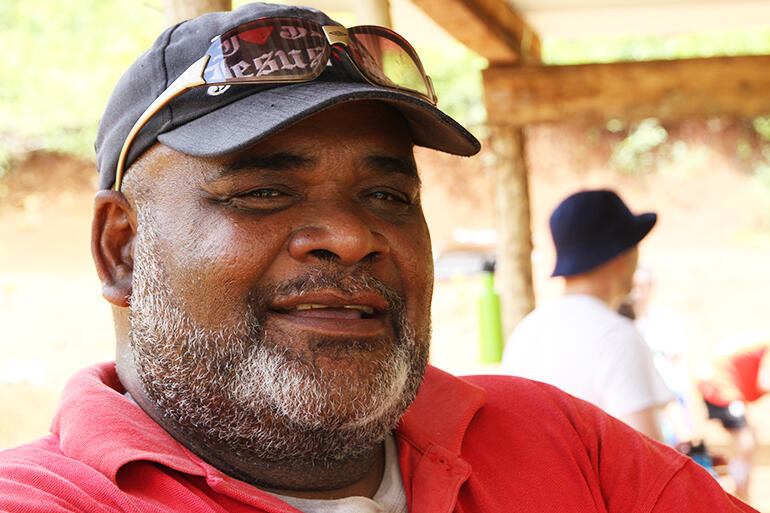
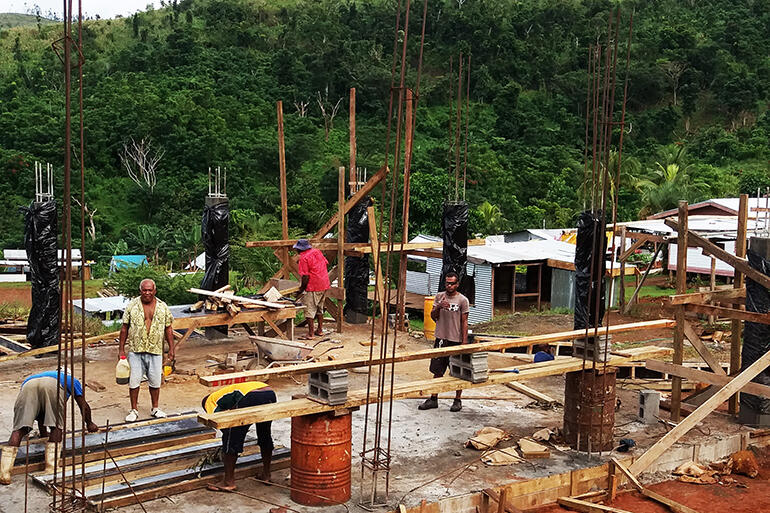
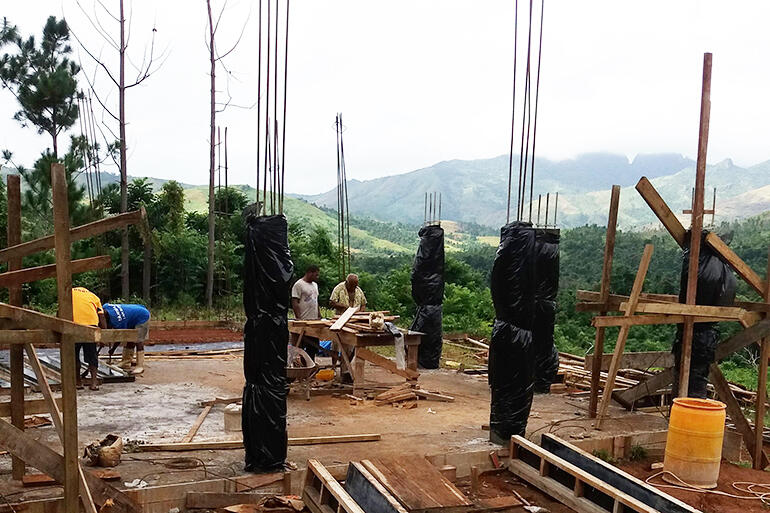
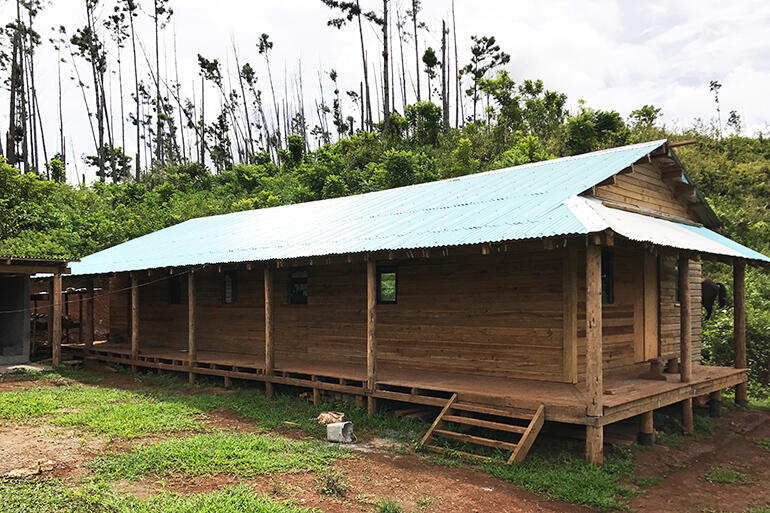
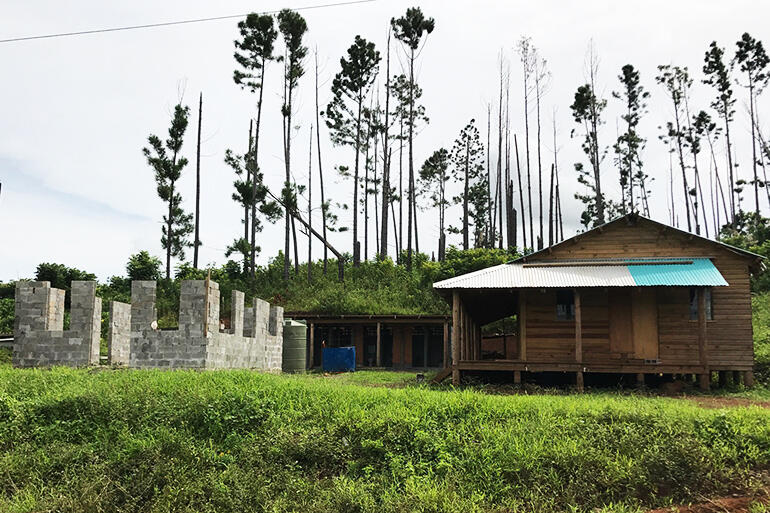
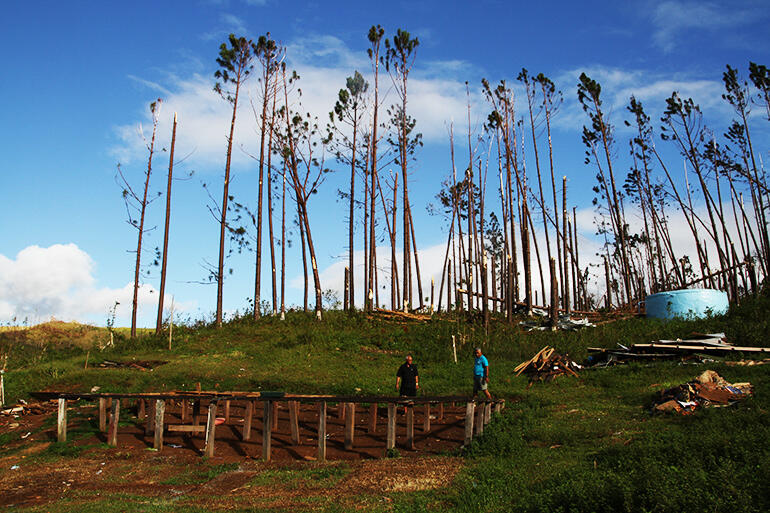
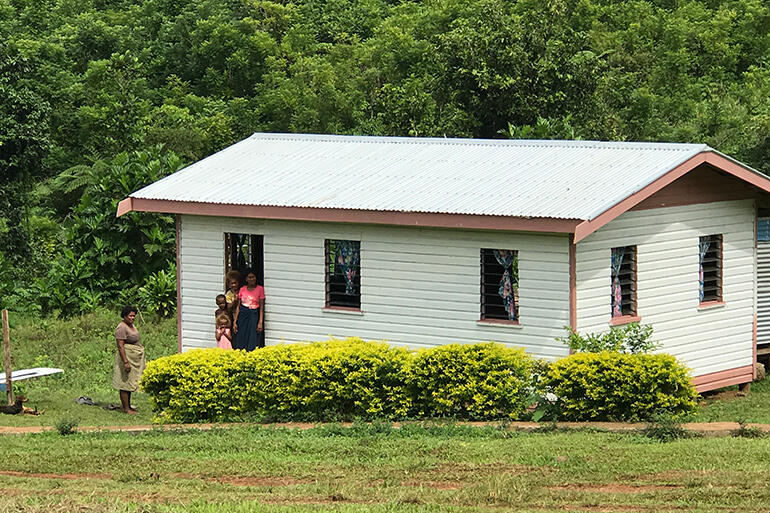
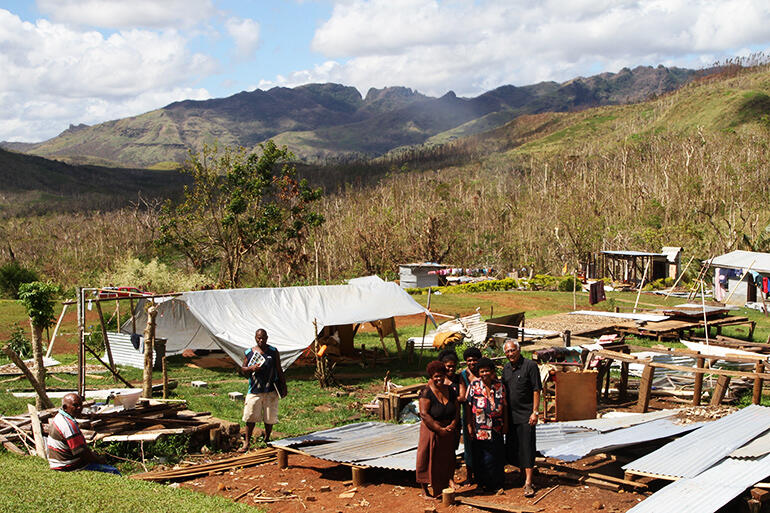
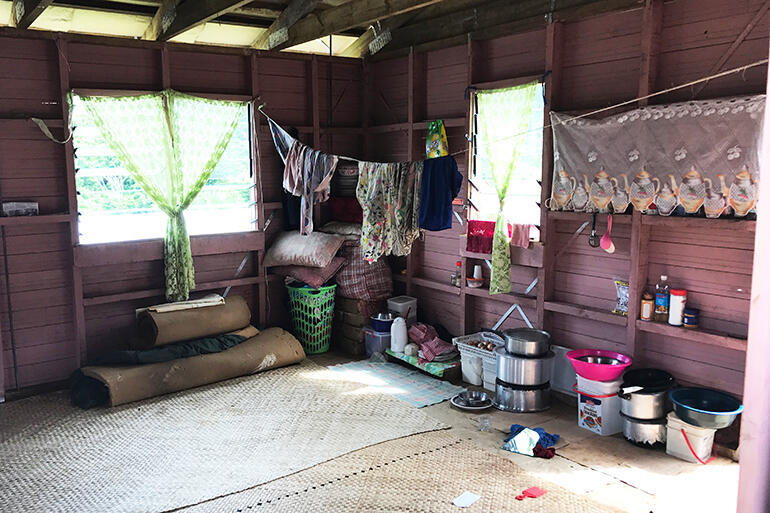
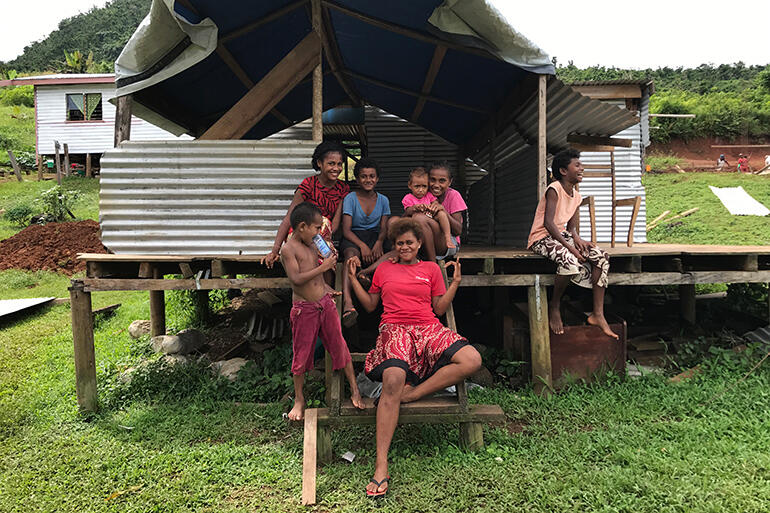
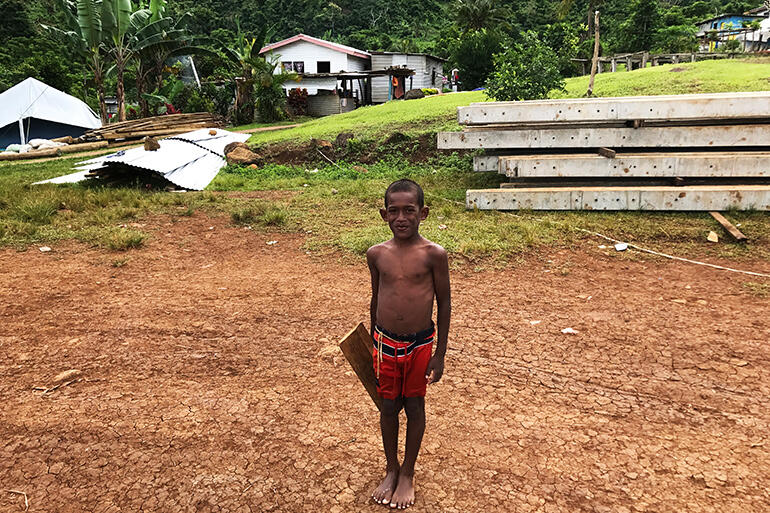
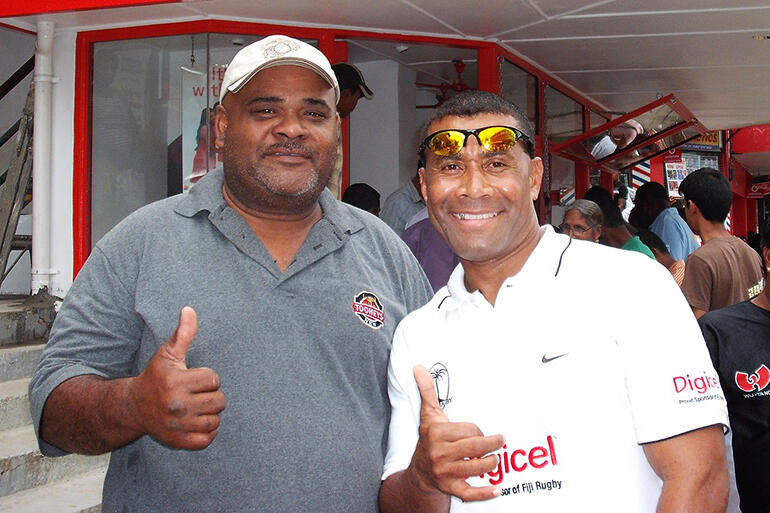
At the best of times, getting into Maniava – the remote Anglican settlement high in the hills in the province of Ra, in the north of Viti Levu, Fiji’s largest island – is a mission.
After two hour’s drive north from Suva, you pull off the sealed King’s Rd on to a gravel road. Then, 30 minutes’ drive later, you leave that gravel road, and begin jolting up a red clay track, criss-crossing streams – and that last pitch up to the korois lean-forward-in-your-seat steep.
So, when those surrounding hills cause the clouds to dump their rain, building stops, and trucks laden with building supplies have no show of getting through.
On days like that, Harold Koi[1] – the builder who is freely giving his time to build Maniava back better – can only stare out of his tent at the rain and the mist, and bide his time.
There are other challenges, too, says Harold: nearly 18 months after the cyclone, the national demand for building materials far outstrips supply – and in late May, too, there was a breakdown at the factory which supplies 80 percent of Fiji’s cement: so that spells more frustration for builders.
Undaunted
Even so, Harold is upbeat.
Harold and “the boys” – the Maniava men who serve as his building labourers – have completed six new cyclone-proof houses, and within the next fortnight, they’ll have pitched the roof beams for the Church of the Resurrection, which will be the crowning glory of the rebuilt koro,and will also serve as a community cyclone shelter.
Then, 20 minutes’ drive down the hill, at the junction of the track into Maniava and the gravel road, the new children’s hostel – built to comply with Fiji’s building code – is 85 percent finished.
When work on that hostel is complete, the Maniava kids will return there each day of the school week, after attending Tokaimalo District School, which is on the other side of that gravel road.
One of the reasons why Harold is happy, he says, is because the people of Maniava’s enthusiasm for the rebuild rubs off on him:
“They’re excited,” he says. “Really excited. They enjoy everything, they’re happy and they’re looking forward to the project being completed.
“Everyone – ladies included – is helping out. Everyone is putting their hands together to complete the jobs.”
When will the job be done?
So when will the whole project – the houses, hostel and the church – be completed?
Well, the AMB’s Appeal for Maniava raised $136,000[2] – and that’s enough to build 15 cyclone-proof houses. Harold and his team are prefabricating these, three at a time, at an onsite workshop they’ve built, and they’re aiming to have the last batch of houses finished by October, which marks the onset of the 2017 cyclone season.
As for the church – remember, that will serve as the community shelter when disaster strikes – that should be completed earlier than that, says Harold.
“If everything falls into place, and there are no further interruptions, we should have finished the church[3]by the second or third week of August.”
As for the hostel[4], there’s a small funding shortfall there. Harold reckons they need another FJ$21,000 to finish the kitchen block (it needs a roof) to do the electrical and plumbing work, to partition the dormitories (male and female) and to put up a fence.
Look around you...
Mind you, Harold’s not hanging around waiting for those funds to materialise: “We started cutting down some pine trees around the village,” he says. “We’ll machine those trees, and use that timber in the hostel, so that might reduce the shortfall.”
Archbishop Winston Halapua sees that the Maniava rebuild is having a snowballing effect.
“We have a venture that seems to be rubbing off on everyone,” he says.
The Red Cross has recently installed community toilets and septic tanks in the koro, and the Fiji Electricity Authority has trucked in a stack of concrete power poles, and is preparing to connect Maniava to the grid. When the lights go on, that’ll be cause for celebration.
Meanwhile, back in Suva, the sisters who run St Christopher’s Orphanage have, as part of their commitment to serve the poor, taken it upon themselves to organise regular vanloads of day labourers and meals for Maniava.
Those trips achieve another purpose, too, says Archbishop Winston
“For those in Maniava, they are proud to see they belong to a bigger family. And for those from Suva, they see the hardships, and the realities faced by those living in the interior.
“But the most important thing is our coming together in building up the community, building up the extended family of God. It’s wonderful to see people putting their hands together.
“As a bishop, I’m excited. I marvel at how things are going.”
#
[1] To read Harold’s story, click here.
[2] The $136,000 raised by that AMB appeal includes $42,000 donated by the Australian Anglican Board of Mission, the Diocese of Texas, and the Episcopal Relief and Development Agency.
[3] The building of the church has been made possible by a £25,000 sterling (NZ$45,000) grant from the Archbishop of Canterbury’s Anglican Communion Fund.
[4] Cyclone Winston struck Fiji on February 20, 2016. It killed 44 people, and damaged or destroyed 40,000 Fijian homes. The St John’s College Trust Board made an immediate emergency grant of $200,000 to the Diocese of Polynesia – and that money has been used to rebuild the Maniava dormitory, and to rebuild a pre-school at St James, Levuka, which was also razed by Cyclone Winston.






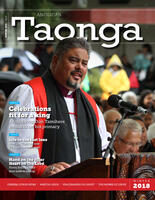
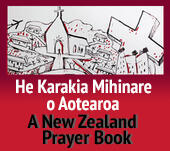



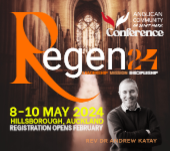
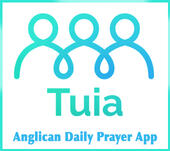




Comments
Log in or create a user account to comment.